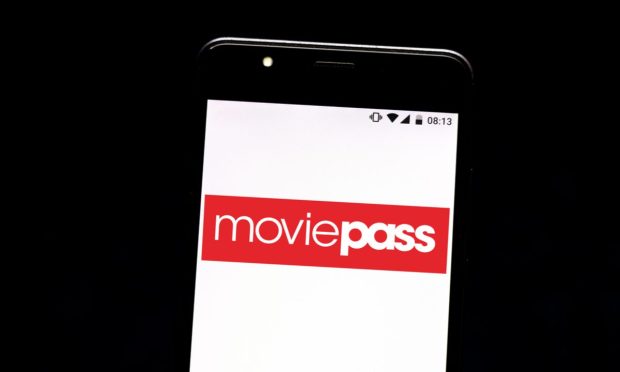MoviePass Relaunches, but Can Sequel Be Better Than Original?

Though it’s taking knocks and seeking a new level in the current environment, streaming subscriptions remain a favorite for millions, though the question remains as to whether a similar model can work for America’s beleaguered movie theaters.
MoviePass, a subscription service for movie theater tickets, is renewing that debate on the news that it is reinventing itself. Taking a page from the streaming video playbook, MoviePass will offer new tiers at different price points designed to appeal to belt-tightening consumers tired of watching TV.
The original problem with MoviePass was unlimited movies on a subscription, and the economics didn’t work for theater chains. A new subscription model addresses that flaw, but millennials and Gen Zers weren’t big theatergoers before, and there’s no sign they ever will be.
It adds up to a bold move to reignite movie night out, which was getting eaten away by streaming’s rise even before the pandemic darkened projectors around the world and put the future of theatrical movie experiences in limbo. Widely-published reports last week said Regal Cinemas’ parent company Cineworld, the second-largest theater chain, is considering bankruptcy as a strategic option — and MoviePass II becomes irrelevant without enough theaters.
Nevertheless, on Monday (Aug. 22), MoviePass announced that it is returning anyway.
According to Variety, “The subsidized ticketing subscription service will relaunch in beta form on Labor Day, though potential users will have to first join a waitlist. Starting on Thursday at 9 a.m. ET, MoviePass will allow customers to sign up on its website for a standby list, which will be open for five days. Anyone who makes the cut will be notified on Sept. 5.”
Originally launched in 2011, the service was struggling with competition from Netflix, Spotify and Apple Music by 2017. That year, PYMNTS’ Karen Webster interviewed Ted Farnsworth, chairman and CEO of Helios and Matheson Analytics Inc., then-owner of MoviePass and now defunct.
Not yet aware that a bankruptcy filing was just three years away, Farnsworth told Webster in 2017 that “we’re bringing millennials back to the theater.”
From the vault: MoviePass On Saving The Movie Theater Model
The article noted that MoviePass had “dropped its subscription price to $9.95 per month, the same as the cost of monthly Spotify, Netflix and Apple Music access. The company’s 15,000 to 20,000 members had previously been paying $39.95 per month, $29.95 per month or most commonly $14.95 per month, depending on subscription package.”
Is MoviePass 2.0 a Good Idea at the Wrong Time?
Variety said the new MoviePass subscription pricing “will vary based on the customer’s ZIP code — and general tiers will be $10, $20 or $30 a month. Each option will give the user a number of credits each month. However, MoviePass has not specified the amount of credits that come with each plan, nor the number of credits required to reserve a movie ticket.”
How that will fly with consumers already caught up in The Great Unsubscribe is hard to gauge, and as previously stated, the outlook is cloudy at best for the future of theatrical films while living rooms are having new releases piped in. In PYMNTS’ July “Consumer Inflation Sentiment: Consumers Pull Back And Prepare For The Long Haul” report, we surveyed nearly 3,800 U.S. consumers and found pessimism.
“Consumers believe inflation will continue at this rate for 22 months, on average, which would mean prices would not revert to pre-2021 norms until the second quarter of 2024,” that report noted. “Forty percent of consumers surveyed are skeptical that inflation will decrease to pre-pandemic levels in the next two years, believing instead that inflation will remain over the 2% mark for the long term.”
Learn more: Consumer Inflation Sentiment: Consumers Pull Back And Prepare For The Long Haul
For their part, beset theater chains see this kind of development as part of a wider trend of consumers tiring of watching subscription services at home and longing for the big screen, movie theater concessions and a return to pre-pandemic (and pre-streaming) norms.
“When you take all this together, Hollywood is turning away from streaming, Wall Street is turning away from streaming; Hollywood is coming back to theoretical exhibition,” AMC Holdings CEO Adam Aron said during the company’s second-quarter earnings call in August.
Maybe. Or maybe not. All of the talk of building momentum and a windfall from “Top Gun: Maverick” during the same earnings call couldn’t edit out the fact that AMC lost $121 million in Q2 — a marked improvement over the year-ago period, certainly, but also another indication that the theater business still faces a long road to recovery.
And subscriptions might not be a cure-all. According to the May “Subscription Commerce Conversion Index,” a PYMNTS and sticky.io collaboration, “Except for streaming, all subscription categories exhibited a decrease in the share of consumers holding subscriptions, dropping from 31% in October 2021 to 24% in March 2022, with inflation being the primary cause.”
See also: The Subscription Commerce Conversion Index
That shows the resilience of streaming entertainment services even in a down economy, though the future of movie theater subscriptions may be entering its second act. Regal Cinemas still has its Regal Unlimited subscription at $18 per month on a minimum commitment for an initial three-month term of $54 or a one-year term of $216.
Additionally, AMC has its AMC Stubs A-List subscription plan, with prices determined by geography and varying by location, according to its website.
